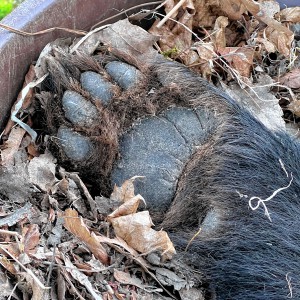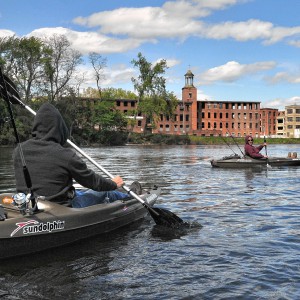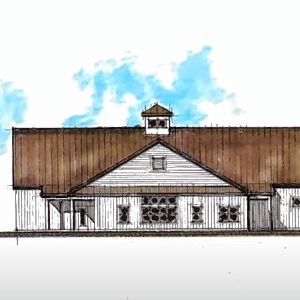Warren Johnston: No overpowering grapefruit taste in this Sauvignon Blanc
| Published: 08-04-2017 5:08 PM |
Whitehaven Sauvignon Blanc,
2016 Marlborough,
New Zealand, $20
Don’t let the price of this wine put you off.
It’s a bit expensive for my purse, too, but it frequently goes on sale for much less, and it is an excellent and well-balanced New Zealand Sauvignon Blanc that won’t drown you with overpowering grapefruit flavors or aromas of bruised tomato vine like some of the country’s cheaper wines do.
Whitehaven is a privately owned winery, started in 1994 in a small rented facility by Sue White and her husband, Greg, who died in 2007. Today, the company annually produces about a quarter million cases of award-winning wine that’s exported around the world.
Before they got into the wine business, the Whites had been working for a decade or more in the financial sector in Wellington, New Zealand’s capital. By 1990, they had had enough of high finance, so they decided to get out of the city and sail around the Pacific in their yacht for a few years, the company’s website and other published articles say.
Eventually, they dropped anchor in Marlborough Sounds, came ashore in Blenheim, and opened the winery with the proceeds from the sale of their house and other assets.
The Whites had good timing. When they got into the business, only a handful of Marlborough’s producers were making good wine, and the region was just beginning to gain international recognition for excellent Sauvignon Blanc. The area also had been hit with a widespread phylloxera outbreak two years earlier, which may have made vineyards more affordable. There was plenty of room to establish a name and to forge a successful business.
The founding philosophy of Whitehaven, which uses a stylized ship’s anchor as part of its logo, is to produce quality wines without compromise, the website says. Sticking to the principle paid off, and by 2002, the Whites were able to build a state-of-art winery and acquire vineyards outside of Renwick, where the company is now based.
Article continues after...
Yesterday's Most Read Articles
 Holyoke man finds bear paw in his yard
Holyoke man finds bear paw in his yard
 Petition to block auto dealership on King Street falters in Northampton
Petition to block auto dealership on King Street falters in Northampton
 First look at how little Amherst’s police alternative being used called troubling
First look at how little Amherst’s police alternative being used called troubling
 Developer lands $400K loan for affordable housing project in Easthampton mill district
Developer lands $400K loan for affordable housing project in Easthampton mill district
 Developer pitches new commercial building on Route 9 in Hadley
Developer pitches new commercial building on Route 9 in Hadley
 Boyfriend accused in slaying of Hampden sheriff’s assistant, former legislator’s top aide
Boyfriend accused in slaying of Hampden sheriff’s assistant, former legislator’s top aide
Marlborough is New Zealand’s most important wine region and has a worldwide reputation for growing pungent and flavorful Sauvignon Blanc grapes.
Situated on the northeastern tip of South Island, Marlborough has two parallel valleys, Wairau and Awatera. Both have similar soils and long, sunny growing seasons that allow grapes to slowly ripen and develop intense flavors, but each also has distinct climates cooled by differing ocean breezes.
Since her husband’s death, Sue White has run and expanded the business using innovative and sustainable practices. For example, waste from the winery is recycled and grape skins from the pressings are used for livestock food. Sheep graze in the vineyard, keeping the weeds low, and fertilizing in the process.
White also has a democratic management style that solicits ideas from her close-knit staff that includes senior winemaker Sam Smail.
The winemaker has chemistry and enology degrees and spent some time learning the craft in Napa and Italy before joining the company 17 years ago. Like many good winemakers, he relies on the grapes to contribute to the wine without adding a heavy hand in the process.
To make Sauvignon Blanc, Smail uses grapes selected from different sub regions in Marlborough. Grapes from Wairau Valley stay on the vine longer and develop rich, complex tropical fruit flavors. Awatera grapes grow in cool, dry and windy conditions, which reduce yields and thicken the skins, giving the wine a distinct mineral character and green flavors, the winemaker says in the tasting notes.
The grapes are picked in late March and early April at night and lightly pressed immediately to avoid lengthy skin contact. The clear juice is vinified and aged in stainless steel vats at very low temperatures in separate lots from each vineyard. After 30 days, Smail blends the lots to come up with the final wine. The result is a clear, dry Sauvignon Blanc with zesty citrus flavors of grapefruit and lemon blended with abundant peach, pear and tropical fruit notes with a clean, crisp finish, the tasting notes say.
This a perfect wine for warm muggy nights and a fine companion to light foods. We had the wine with shrimp pasta, but it’s excellent with summer salads and shellfish.
Whitehaven Sauvignon Blanc is widely available throughout New England. Although the recommended retail price is $20 a bottle, I find it regularly around $14. Smail recommends drinking the wine while it’s fresh and young, but he also says it will “develop nicely” over the next three to five years. So, if you find it on sale, buy it and keep it for a special occasion.
Suggestions of wines in the $10 range are always appreciated. Warren Johnston can be reached at raiseyourglassofwine@gmail.com. For past recommendations, go to raiseyourglassofwine.com.

 Valley Bounty: Grass-fed animals that feed the grass: Gwydyr Farm in Southampton focuses on ‘restoring the connection between land, food and people’
Valley Bounty: Grass-fed animals that feed the grass: Gwydyr Farm in Southampton focuses on ‘restoring the connection between land, food and people’ Weekly Food Photo Contest: This week’s winner: Mary Chicoine of Easthampton
Weekly Food Photo Contest: This week’s winner: Mary Chicoine of Easthampton  Speaking of Nature: A romantic evening for two birders — To hear the wonderful sounds of the Saw-whet Owl one must go outside at night
Speaking of Nature: A romantic evening for two birders — To hear the wonderful sounds of the Saw-whet Owl one must go outside at night Speaking of Nature: Where have all the birds gone?: They’re there, and here’s a handy tool to keep track of their appearances
Speaking of Nature: Where have all the birds gone?: They’re there, and here’s a handy tool to keep track of their appearances
